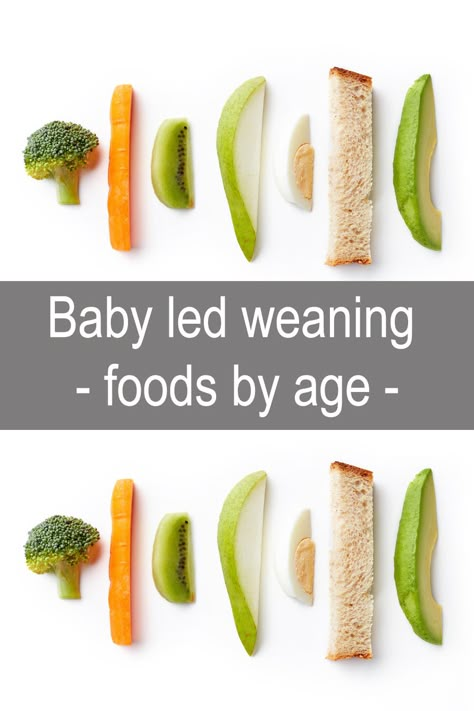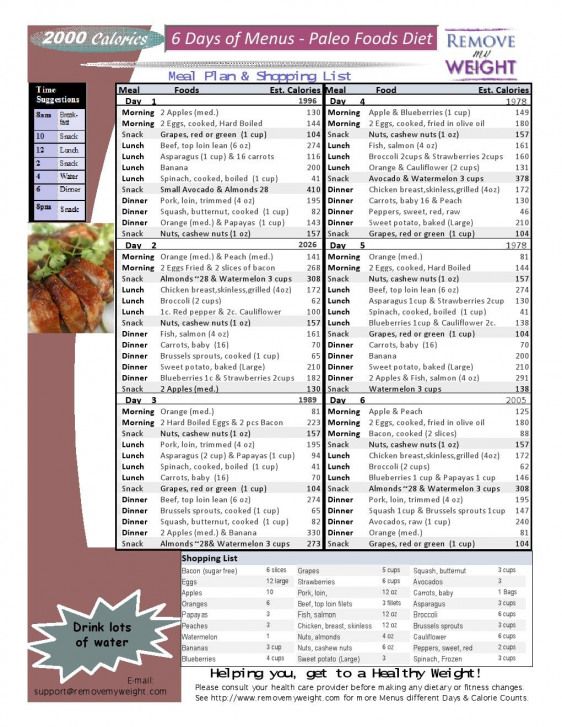List of baby foods by age
Foods to avoid feeding your baby
Foods to avoid giving your baby include honey, cow's milk, soy milk, fruit juice, sugar-sweetened beverages, unpasteurized foods, and foods with added sugars or too much sodium. Choking hazards are a serious concern, so don't offer large chunks, raw vegetables, nuts and seeds, hard or crunchy foods, sticky foods, or dollops of nut butters. If allergies run in your family or your baby has eczema, check with the doctor about introducing allergenic foods such as egfgs, peanuts, tree nuts, wheat, soy, fish, and shellfish.
As your baby grows, they'll be eager to sample food from your plate – and you'll be eager to introduce some variety. But not all foods are safe for your child.
Foods to avoid: Birth to 6 months
All food and beverages except breast milk or formula: The American Academy of Pediatrics (AAP) recommends feeding your baby only breast milk or formula for about the first 6 months.
Foods to avoid: 6 to 12 months
Honey: Honey can harbor spores of Clostridium botulinum, which causes botulism. An adult's intestinal tract can prevent the growth of these spores, but in a baby the spores can grow and produce life-threatening toxins.
Cow's milk and soy milk: Stick with breast milk or formula until your child's first birthday. Why? Your baby can't digest the proteins in cow's milk and soy milk during the first year, and these beverages contain minerals in amounts that can damage your baby's kidneys.
Fruit juice and sugar-sweetened beverages: Juice (even 100 percent fruit juice) and sugar-sweetened beverages such as soda and sports drinks aren't recommended for children under 12 months. When babies fill up on these drinks, they miss out on getting the nutrients they need. And though fruit juice seems healthy, it has far more calories and sugar than fresh fruit and can contribute to weight gain and tooth decay. The AAP recommends no fruit juice for babies, and just 4 ounces per day maximum for toddlers ages 1 to 3.
Unpasteurized foods: Don't give babies and children unpasteurized juice or cider or unpasteurized (raw) dairy products.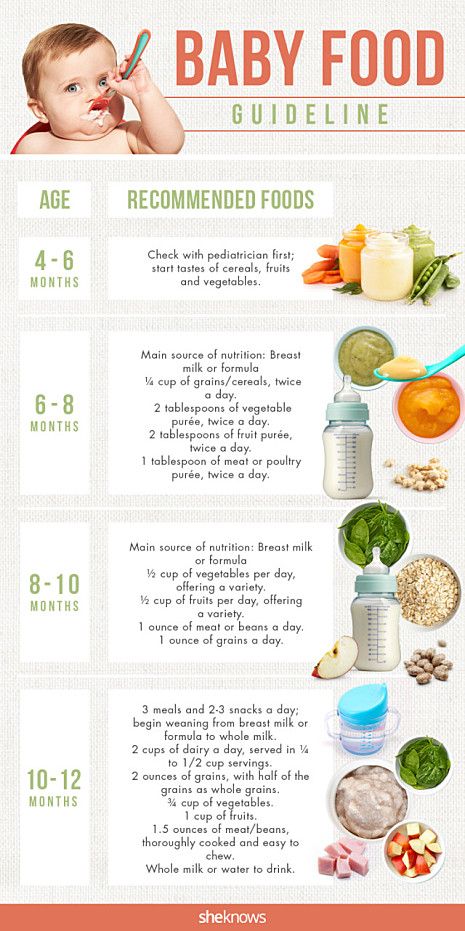 These may contain harmful bacteria and parasites that can lead to serious illness or death.
These may contain harmful bacteria and parasites that can lead to serious illness or death.
Added sugars: Avoid added sugar in the diets of children under age 2, the U.S. Department of Agriculture and U.S. Department of Health and Human Services advise. These are sugars and syrups that are added to foods or beverages when they are processed or prepared. This doesn't include sugars found in milk and fruits. Too much added sugar in children's diets has been linked to obesity and increased risk for future health problems such as diabetes and heart disease. Check the Nutrition Facts label on packaged foods, and avoid those that list 1 g or more of "Added Sugars."
Too much sodium: Sodium is an essential nutrient primarily consumed as salt. However, too much can be harmful. Children this age don't need more than 1,200 mg of sodium per day, according to the USDA and DHHS. Check the Nutrition Facts label when buying canned, frozen, and packaged foods.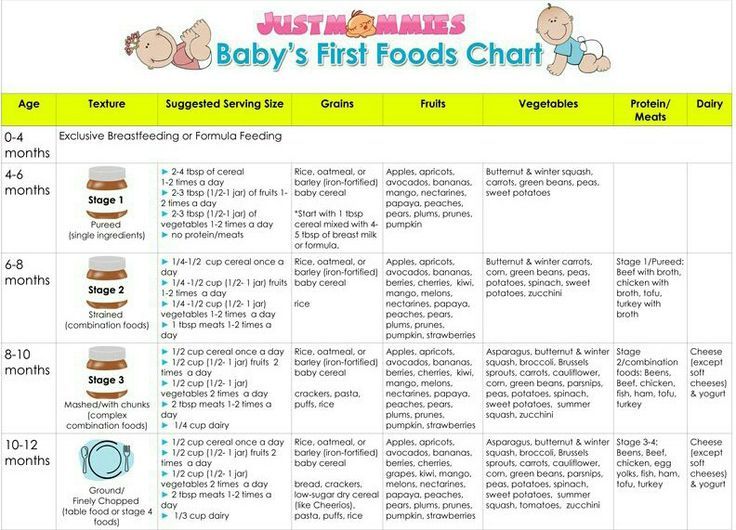
Large chunks: A chunk of food can get stuck in your baby's throat. The AAP recommends that you cut food into pieces no larger than 1/2 inch. For example, cut up fruits such as grapes, cherry tomatoes, and strawberries, and shred or finely chop meats, vegetables, and cheeses.
Raw vegetables: Soft-cook vegetables such as carrots, celery, and broccoli, and dice, shred, or cut them into pieces no larger than 1/2 inch before serving.
Nuts and seeds: Remove seeds and pits from fresh fruit such as watermelon, peaches, plums, and cherries before serving. And don't feed your baby nuts or seeds, such as sunflower or pumpkin seeds. Seeds may be too small to choke on but can get stuck in a child's airway and cause an infection.
Hard or crunchy foods: Nuts, popcorn, and pretzels are all choking hazards, as are all hard candies and cough drops.
Sticky foods: Chewing gum and sticky foods – such as jelly or gummy candies, dried fruit, and marshmallows – can get lodged in your baby's throat.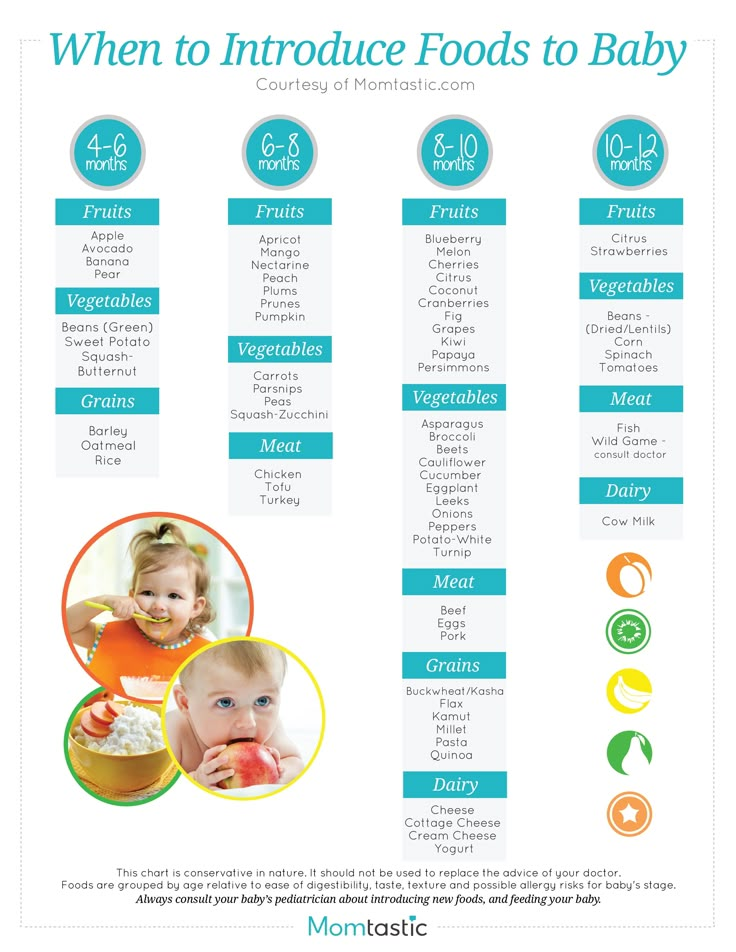 Stringy, melted cheese can also be a choking hazard.
Stringy, melted cheese can also be a choking hazard.
Nut butter: The sticky consistency of peanut butter and other nut butters can make it hard for your baby to swallow it. Spread nut butter thinly on bread or crackers. Or thin it with water or applesauce.
Learn more about preventing choking in young children.
Find out about choosing safe finger foods and which foods can be unsafe for toddlers and children up to age 5.
The latest on children and food allergies
Doctors used to recommend waiting until age 1 or even later to introduce solid foods that are common allergens, especially with children at risk for allergies. But the AAP has changed its tune, because studies show that these delays don't help prevent allergies and may even increase the risk of them.
You may be told to introduce foods one at a time, waiting three to five days after each new food to watch for any allergic reaction. Or your doctor may say it's fine to start multiple new foods at once. If you believe your baby is likely to have food allergies – for example, if allergies run in your family or your baby has eczema – check with their doctor to determine the best strategy for introducing allergenic foods, which include eggs, milk, peanuts, wheat, soy, tree nuts, fish, and shellfish.
If you believe your baby is likely to have food allergies – for example, if allergies run in your family or your baby has eczema – check with their doctor to determine the best strategy for introducing allergenic foods, which include eggs, milk, peanuts, wheat, soy, tree nuts, fish, and shellfish.
Read more about food allergies in children.
How much should my baby eat? A guide to baby food portions
- Community
- Getting Pregnant
- Pregnancy
- Baby names
- Baby
- Toddler
- Child
- Health
- Family
- Courses
- Registry Builder
- Baby Products
Advertisement
Wondering how much to feed your baby? This can be hard to figure out, especially when you're starting solids and most of your baby's food ends up on your little one or the floor. It's also difficult to determine how much an 8-month-old (or older baby) should eat – babies this age are more interested in solid foods but still get most of their nutrition from breast milk or formula. This visual guide to baby food portions can help you figure out how much your baby should eat at every stage.
This visual guide to baby food portions can help you figure out how much your baby should eat at every stage.
Photo credit: Karla Martin for BabyCenter
How much should my baby eat?
Do you worry that your baby is eating too little or too much? Your baby will self-regulate her food intake based on what their body needs, so let their appetite be your guide.
It's helpful to have a reference point, however. Here are photos of how much solid food a baby typically eats in a day. You can also ask your baby's doctor for feeding advice.
This visual guide shows:
- Portions for infants who are new to solids (typically 4 to 6 months)
- Two sample meals for a younger baby (6 to 8 months)
- Three sample meals and two snacks for an older baby (8 to 12 months) from a menu developed by the American Academy of Pediatrics (AAP)
Your little one may eat less or more than what's shown here. Your job is to provide a variety of healthy foods at regular intervals without pressure, and their job is to decide what and how much to eat.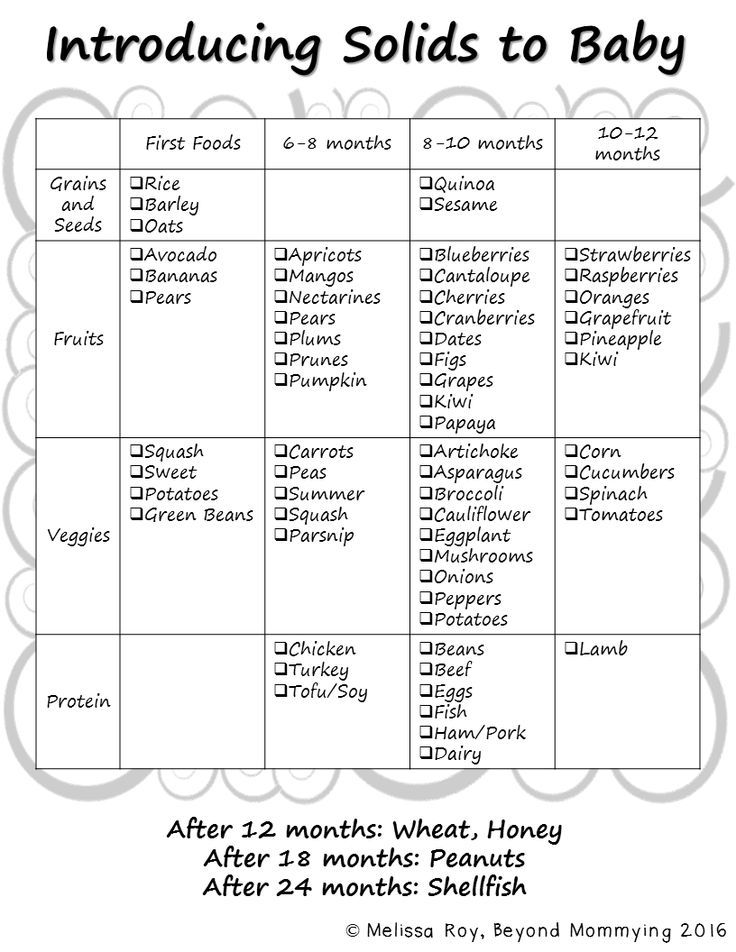
Photo credit: iStock.com / UntitledImages
Watch for signs your baby is full
Lots of factors – including activity level, growth spurts or plateaus, illness, and teething – will affect your baby's appetite, which can vary daily.
End feeding when they signal that they're done. Signs of being full include:
- Turning their head away
- Refusing to open their mouth for another bite after they've swallowed (resist the urge to encourage your baby to have one last spoonful)
- Leaning back in their chair
- Playing with the spoon or food rather than eating
Photo credit: Karla Martin for BabyCenter
How much a 4- to 6-month-old should eat
When your baby is developmentally ready for solids, typically around 4 to 6 months, talk to their doctor about introducing solid foods. The first bites are mostly about them getting used to the idea of having something different in their mouth.
- Start with a very small amount, 1 to 2 teaspoons, of a single-ingredient puree.
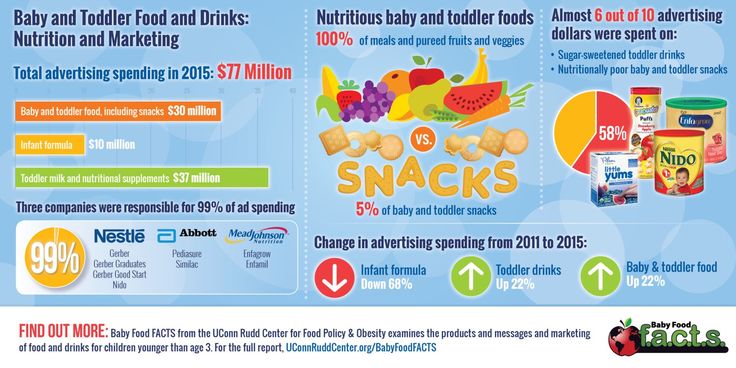
- Gradually increase to 1 to 2 tablespoons of food once a day.
- Follow your baby's fullness cues.
Popular first foods include pureed mango, banana, chicken, turkey, beef, peas, sweet potatoes, and infant cereal. It's up to you what food to start with, but wait 3 to 5 days between introducing each new food to make sure your baby doesn't have an allergic reaction or food intolerance. (And remember, no cow's milk or honey until age 1.)
Photo credit: Karla Martin for BabyCenter
How much a 6- to 8-month-old should eat
As your little one gets more comfortable with solids, you can increase the frequency of meals and variety of food.
- Transition from one to two meals a day, typically by 8 months.
- Over time, add a second food to each meal. The photo above is an example of a meal with two foods.
- Once you've worked up to two meals with two foods each, aim for a balance of proteins, vegetables, fruits, and grains in their daily diet.
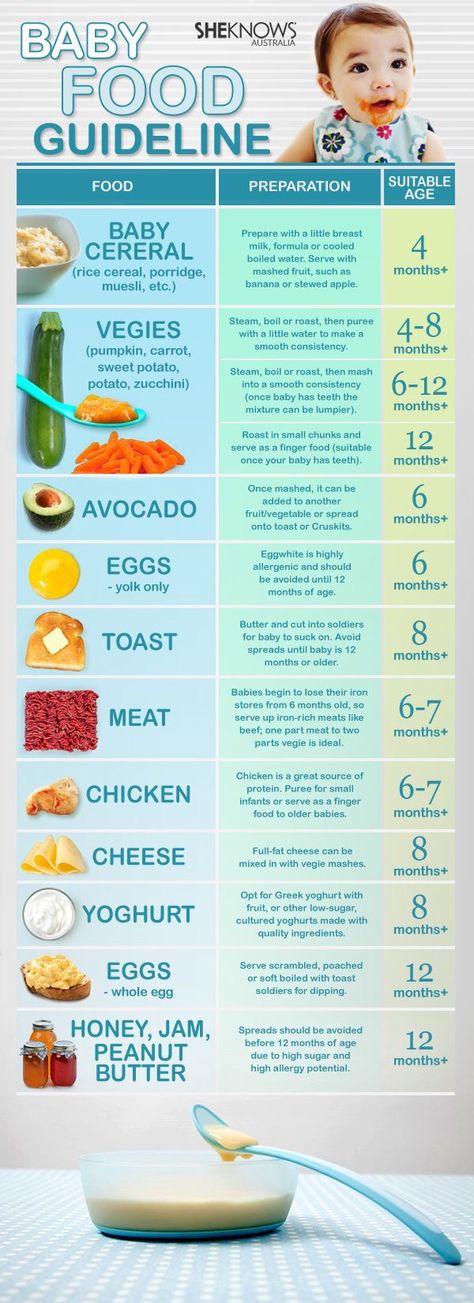
- Whenever you introduce a new food, start with a very small amount, a teaspoon or two, to allow your baby to get used to its flavor and texture.
- Start with a soupy consistency. Gradually add more texture as their eating skills improve.
Expect their intake of breast milk or formula to go down. They'll start drinking less of it as they eat more solid foods. Provide healthy options at mealtimes, and let them choose how much to eat.
Note: The jars in all photos are standard 4-ounce baby food jars.
Photo credit: Karla Martin for BabyCenter
Breakfast for a younger baby (6 to 8 months)
Cereal and fruit make an easy combination for a morning meal.
Grain: Iron-fortified, whole-grain infant cereal is a popular first grain. At 6 months, a typical daily portion of infant cereal mixed with breast milk or formula might be 2 to 3 tablespoons, increasing to 4 to 8 tablespoons (1/4 to 1/2 cup) by 8 months. (It's best to avoid rice cereal, though.)
(It's best to avoid rice cereal, though.)
Fruit: Babies love the natural sweetness of fruits like pears, apples, berries, prunes, and stone fruits. Between 6 and 8 months, a baby will typically transition from about 2 to 3 tablespoons of fruit puree a day to 4 to 8 tablespoons (1/4 to 1/2 cup) of mashed or minced fruit.
Photo credit: Karla Martin for BabyCenter
Dinner for a younger baby (6 to 8 months)
If you serve a grain and fruit in the morning, consider offering a protein-rich food and vegetable later in the day. Your child may eat more or less than the amounts shown.
Protein: A baby might transition from eating 1 to 2 tablespoons of meat puree at 6 months to 2 to 4 tablespoons at 8 months, for example. Other good protein sources include cheese, unsweetened plain whole-milk yogurt, tofu, beans, and lentils.
Vegetables: Between 6 and 8 months, a baby will typically transition from about 2 to 3 tablespoons of vegetable puree a day to 4 to 8 tablespoons (1/4 to 1/2 cup). Try classic favorites like carrots, spinach, or butternut squash, as well as less traditional first foods such as parsnips, beets, or asparagus.
Try classic favorites like carrots, spinach, or butternut squash, as well as less traditional first foods such as parsnips, beets, or asparagus.
As your child's eating skills improve, gradually add more texture by dicing or mincing foods.
Photo credit: Karla Martin for BabyCenter
How much an 8- to 12-month-old should eat
By 8 months or so, your baby is likely getting the hang of eating and needs to eat more calories to support their growing body. But since their little belly can't hold a lot of food, they'll need to eat more often. Every baby is different, but this may be a good time to try offering a third solid food meal.
During this period:
- Continue to give your baby breast milk or formula.
- Add morning and afternoon snacks. (Some babies this age are happy with breast milk or formula as their snack, while others gravitate toward solid foods.) Once you've added a third meal and snacks, your baby will be eating or drinking something about every two to three hours.
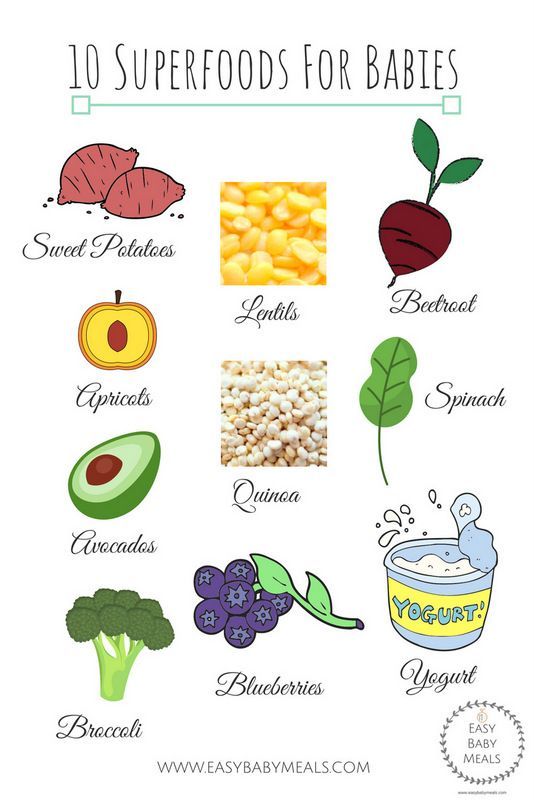
- Continue to aim for a mix of proteins, vegetables, fruits, and grains.
- Introduce coarser and chunkier textures, for example, by dicing or mincing food instead of pureeing it, and graduate to soft finger foods as your baby's eating skills improve.
- Avoid foods with added sugars. Check the Nutrition Facts label on packaged foods, and try to steer clear of foods that list 1 gram or more of "Added Sugars."
- Provide healthy options, and let your baby choose how much to eat.
To visualize daily portions for an 8- to 12-month-old, check out the following photos of a typical day's menu for a baby this age, developed by the AAP.
Your child may eat more or less than these amounts. If you're concerned about how much your baby is eating, talk to their doctor for advice.
Photo credit: Karla Martin for BabyCenter
Breakfast for an older baby (8 to 12 months)
The AAP sample menu for a baby 8 to 12 months features a breakfast consisting of:
- 4 to 8 tablespoons (1/4 to 1/2 cup) whole-grain infant cereal mixed with formula or breast milk
- 4 to 8 tablespoons (1/4 to 1/2 cup) diced fruit
Note: This is an example.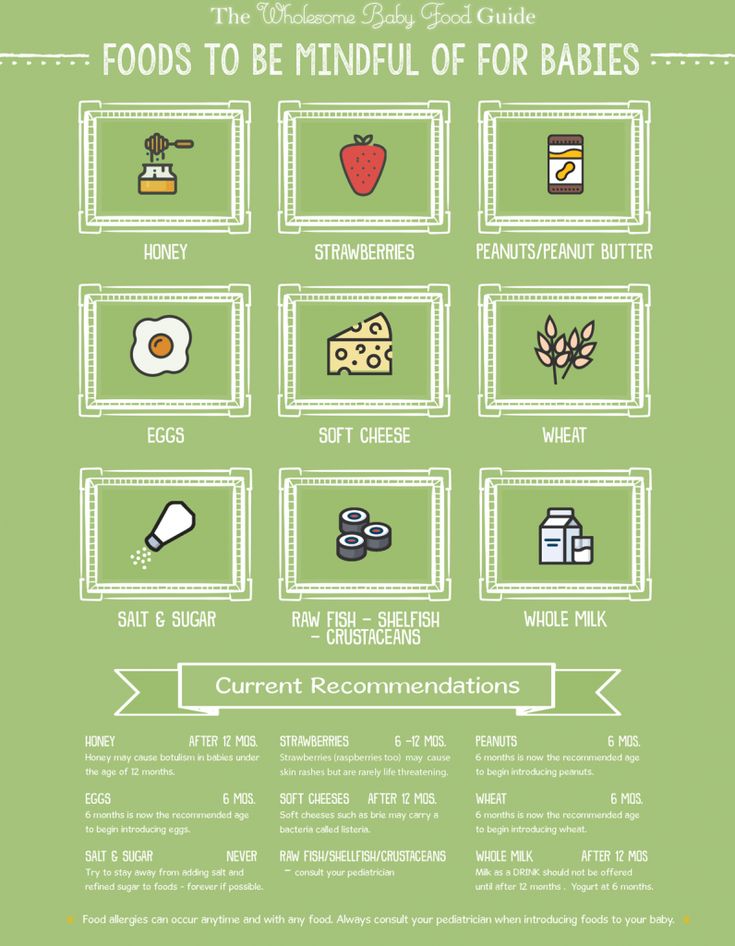 Your baby may eat different foods and amounts.
Your baby may eat different foods and amounts.
Photo credit: Karla Martin for BabyCenter
Morning snack for an older baby (8 to 12 months)
The AAP sample menu for a baby 8 to 12 months features a morning snack consisting of:
- 4 tablespoons (1/4 cup) diced cheese or cooked vegetables
Note: This is an example of a morning snack, which babies typically add sometime between 8 and 12 months. Your baby may eat different foods and amounts.
Photo credit: Karla Martin for BabyCenter
Lunch for an older baby (8 to 12 months)
The AAP sample menu for a baby 8 to 12 months features a lunch consisting of:
- 4 to 8 tablespoons (1/4 to 1/2 cup) unsweetened plain whole-milk yogurt or cottage cheese, or minced meat
- 4 to 8 tablespoons (1/4 to 1/2 cup) diced or mashed yellow or orange vegetable
Note: This is an example. Your baby may eat different foods and amounts.
Photo credit: Karla Martin for BabyCenter
Afternoon snack for an older baby (8 to 12 months)
The AAP sample menu for a baby 8 to 12 months features an afternoon snack consisting of:
- 4 tablespoons (1/4 cup) diced fruit or unsweetened plain whole-milk yogurt
- 1 whole-grain teething biscuit or cracker
Note: This is an example of an afternoon snack, which babies typically add sometime between 8 and 12 months. Your baby may eat different foods and amounts.
Your baby may eat different foods and amounts.
Photo credit: Karla Martin for BabyCenter
Dinner for older baby (8 to 12 months)
The AAP sample menu for a baby 8 to 12 months features a dinner consisting of:
- 4 tablespoons (1/4 cup) minced or ground poultry or meat, or diced tofu
- 4 to 8 tablespoons (1/4 to 1/2) cup diced, cooked green vegetable
- 4 tablespoons (1/4 cup) noodles, pasta, rice, or potato
- 4 tablespoons (1/4 cup) diced fruit
Note: This is an example. Your baby may eat different foods and amounts.
Photo credit: Karla Martin for BabyCenter
How much should my baby drink once they start eating solids?
Breast milk or formula will fully meet your child's hydration needs until they're about 6 months old. They may start drinking less as solid foods become a bigger part of their diet. Here are typical daily amounts by age – your baby's intake may be different, however.
6 to 8 months: 24 to 32 ounces of formula, or continued breastfeeding on demand
8 to 12 months: 24 ounces of formula, or continued breastfeeding on demand
Water: You can offer your baby water once they start eating solids, but let them self-regulate how much they drink. The Centers for Disease Control and Prevention (CDC) recommends giving babies who are 6 to 12 months old 4 to 6 ounces of water a day, but what your baby decides to drink may vary. They may drink more on a hot day, for example.
Avoid juice: Juice isn't recommended for babies younger than 12 months.
Photo credit: iStock.com / SDI Productions
Your baby has the final say
Keep in mind that these portions are an estimate. The truth is, every baby is different, and there's no set amount of food that's appropriate for every baby at every stage.
If you're worried about whether your baby is eating enough – or too much – the best advice is to look for and respond to signs that your baby is full.
Your baby's doctor will chart their weight gain at regular intervals. If the doctor sees a consistent growth curve and doesn't have other concerns, your baby is most likely eating the right amount of food.
Hungry for more?
Age-by-age guide to feeding your baby
The 10 best foods for babies
The worst foods for babies
Using spices and seasoning in baby food
Elizabeth Dougherty
Elizabeth Dougherty is a veteran parenting writer and editor who's been contributing to BabyCenter since 2015. She's an intrepid traveler, devoted yogi, and longtime resident of Silicon Valley, where she lives with her husband and son.
Advertisement | page continues below
Union of Pediatricians of Russia
Nutrition for children from 1 to 3 years of age
The period from 1 to 3 years of life is a crucial stage in the transition to an adult type of nutrition, which has certain features. In order to ensure that all the necessary nutrients enter the child's body and at the same time prevent an excess of individual nutrients, nutrition should be balanced and varied.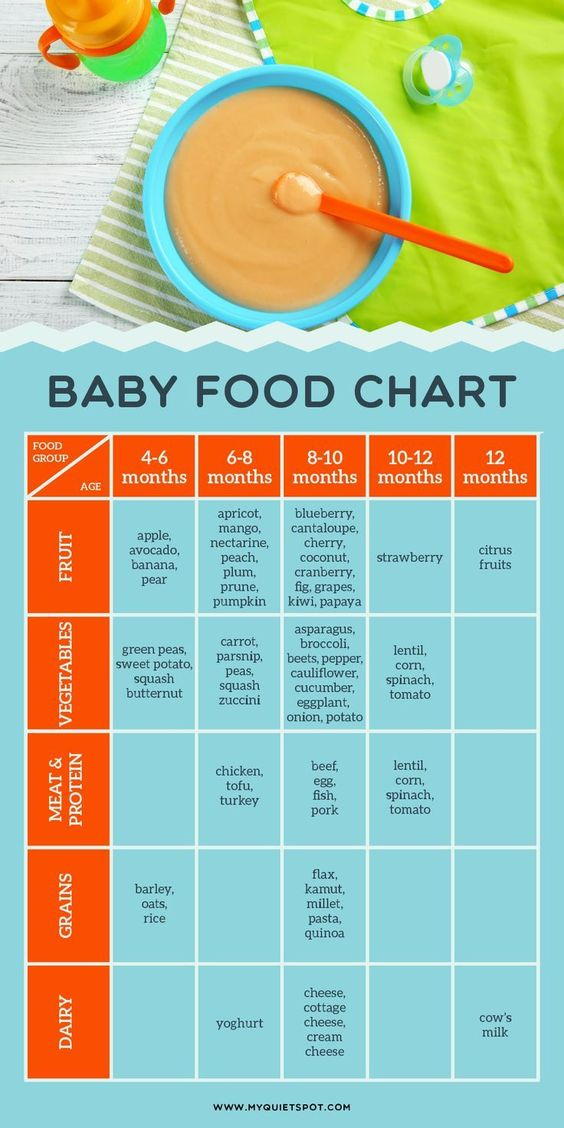
The daily amount of food for children aged 1 to 1.5 years should be 1000-1200 g, from 1.5 to 3 years - 1200-1500 g, the amount of food in one feeding should not exceed 300-350 ml. The diet consists of three main meals per day and two snacks. It is considered optimal when breakfast is 25% of the total energy density of the diet, lunch is 30–35%, dinner is 20%, and additional meals are about 10%. In general, the child can eat the same food as the rest of the family.
In the diet of a child of 1–3 years of age , must be present daily: meat of animals or poultry, dairy and sour-milk products, vegetables, fruits, bread, cereals, vegetable and butter; fish and eggs are included in the diet 2-3 times a week.
Cereal products: bread - 2-3 servings per day, cereals and side dishes - 1 time per day
Fruit and/or vegetables: at least 5 times a day
Dairy products: at least 3 servings per day (including those used to make cereals, yoghurts, fermented milk drinks, cottage cheese, infant formula or breast milk).
Domestic pediatricians recommend, when compiling a diet for children aged 1–3 years, preference should be given to specialized children's dairy products of industrial production that meet high quality requirements and safety indicators for this age. Most children's dairy products are additionally enriched with vitamins and/or minerals and other biologically active components, taking into account the physiological needs of children of this age. At the same time, in foreign recommendations, children over 1 year old are offered the gradual introduction of whole cow's milk, which is rich in fats necessary for proper growth and development, the absorption of vitamins A and D, the development of the child's brain and nervous system.
Meat dishes: 2-3 times a day
Fish dishes: 2-3 servings per week
Eggs: 2-3 per week
Dietary fats: 3-4 teaspoons of butter and/or vegetable oils per day
When cooking, use the minimum amount of salt and sugar, and do not add them to industrial products.
Offer your child a variety of foods and let them choose for themselves. Children love to eat on their own, so if possible, offer food that the child can eat with their hands.
It is important to remember that a baby can choke on pieces of food, so whatever you give your baby should be crushed or cut into small pieces that can be easily chewed.
Do not give to a small child: nuts, whole grapes, cherry tomatoes (unless quartered), whole carrots, seeds (such as pumpkin or sunflower seeds), round candies, legumes, raisins, because a child can eat them choke.
Also in the diet of children of the first 3 years of life should not be present:
Mushrooms; canned snacks, pickled vegetables and fruits
Home canned food
Dry concentrates for side dishes
Hot sauces, mustard, horseradish, pepper, vinegar, mayonnaise
Natural coffee
Juices and drinks in the form of dry concentrates; sweet carbonated drinks
Products containing food additives (flavorings, dyes of artificial origin, including chewing gum), popcorn
Combined fats; cakes and pastries
It is important to remember that children of this age should not be given too spicy and spicy foods.
Baby food: list, technology, production
The health of any person depends on what enters the body with food. This is especially important in tender childhood, when internal systems are still developing. The correct interaction of enzyme structures, chemical components of food is the key not only to the health of the baby, but also to the proper development of the child. To do this, it is necessary to form its menu using baby food, dairy products.
Match each other
The currently developed technology of baby food products makes it possible to produce positions that are combined with the characteristics of the child's body at the most tender age. This takes into account all stages of food processing by the body. We are talking not only about the gastrointestinal tract and the absorption processes occurring in it, but also about the transportation of components to tissues and organs. Proper nutrition of the child should ensure the supply of the necessary components at the cellular level for the further subcellular process of providing the body with the necessary compounds.
Specialized baby food products are created taking into account age needs. They must be of high quality, have characteristics that meet the requirements of metabolism. Through food, enzymatic processes occur in the body, so it is very important to have all the components necessary for the proper course of a chemical reaction.
What is there?
Baby food products are currently divided into five broad categories. The classification is based on chemical, biological specific qualities. Each of the groups is designed for a certain age of life.
For the youngest children, food designed for six months of age is suitable. The body is still immature, the digestive tract is just developing. Fermentation processes are rather weak, and this imposes serious restrictions on the possibility of eating a variety of foods. Usually, until the age of six months, the child mainly feeds on mother's milk, which contains all the important substances that the baby needs.
Growing up and growing up
A much wider choice of products of the second category, that is, intended for children under the age of one, but already older than six months. The production of baby food products of this class is based on knowledge about plastic nutrition, energy metabolic processes occurring in the body.
The production of baby food products of this class is based on knowledge about plastic nutrition, energy metabolic processes occurring in the body.
The most important for the child during this period are milk and products made on its basis, diluted with proteins, starch, iron, vitamins, minerals. Protein comes from meat, and grains provide energy in the form of starch. To provide body tissues with iron, the menu includes liver, oatmeal, egg yolks. Vitamin complexes, mineral children receive from fruits and vegetables.
Third group
These baby foods are intended for children over one year old but under three years old. At this time, the body is actively developing, which obliges parents to provide an influx of all important components through food. Biochemical processes are active, physical systems develop and mature. In many ways, the functions of the body at this age become what they will remain for life. The child has a reduced need for protein structures; you need slightly less vitamins that supply energy to the components (calculations are made per kilogram of mass).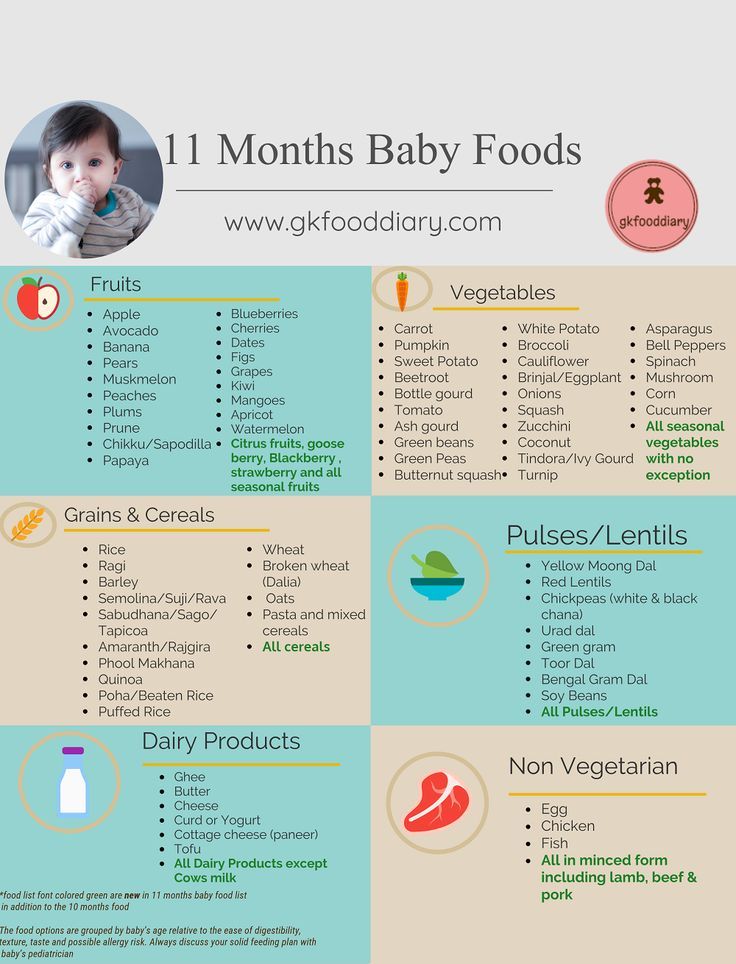
During this period, a wide variety of baby foods are allowed, their list is much wider than the options listed above. For the proper development of the body, it is necessary to provide the main food categories (almost without exceptions). It is important to take into account the peculiarities of a young age: this affects the requirements for cooking. For baby food, special ratios of different components are recommended, which are not typical for the adult population. The emphasis is still on milk and products made from it. Children need bread, cereals, mashed potatoes, fish, meat, vegetables, fruits, natural juices. In order for food to be adequately absorbed, it is necessary to carefully grind the components.
The child is growing
You can find out what a child older than three years old, but younger than six years old, should eat from the food norms in kindergarten. Of course, it is not necessary to adhere to them at home, but parents should understand: such rules have been developed by specialists taking into account children's characteristics and needs, so it will definitely not be superfluous to navigate them.
Normally, a healthy child of 3-6 years of age easily absorbs almost all baby foods (not only natural, but also canned food). The most useful are considered to be combined, including components of mineral origin, protein structures. This is more important for those who visit the kindergarten. Sweets, bread, cereals are recommended. You should prefer rich in vitamins, amino acids, specialized dishes designed specifically for kids. Of the vitamins, the most significant are those belonging to group B.
Let's go to school
During this period, children's food should be extremely diverse, and the menu should be rich in order to satisfy all the needs of a growing organism. Normally, every day a child should consume up to half a liter of milk and products based on it. Salads, soups should be eaten with sour cream, and fresh butter is recommended without special processing. Fish, meat, chicken eggs, vegetables and fruits should be included in the diet. Vegetable oil is recommended for dressing vegetables.
The list of children's food for school age includes bread products. Rye varieties and products enriched with useful components deserve special attention. Cereals will not be superfluous. For normal development and growth, a child needs berries, vegetables, unclarified juices containing pulp, pectin.
The right approach is the basis of success
Currently, our state has special standards - "SanPin" for food in kindergarten. This is due to the need at the state level to develop a culture of nutrition for young citizens in order to ensure a healthy future for the nation. The right combination, the presence of nutritional components is not just a guarantee of the health of one particular child, but of the entire generation. It is the responsibility of adults to provide the kids with products, regulate the rhythm and instill the right food culture.
Difficulties associated with the control of the production of food for children and its sale are due to the high requirements of the current regulatory documentation. Characteristics are normalized by specialized acts so that the diet intended for children, other things being equal, can satisfy all the needs of the body. At the same time, it is unacceptable for products prohibited in baby food to be included in the menu, since their use is associated with a potential danger to the health and even life of the child.
Characteristics are normalized by specialized acts so that the diet intended for children, other things being equal, can satisfy all the needs of the body. At the same time, it is unacceptable for products prohibited in baby food to be included in the menu, since their use is associated with a potential danger to the health and even life of the child.
Some features
Infant formula does not currently need to be specifically certified. Other products intended for children are not subject to such an operation. The manufacturer must declare his product, officially confirm that it meets the standards. From the point of view of the law, a declaration is equivalent to a certificate.
Until relatively recently (until the summer of 2013), the country had a registration system in accordance with GOST. The old rules declared that mixtures should be safe. This fact was established by reconciliation with the standards adopted at the federal level. In 2013, new regulations were legalized, which included some items regarding children's nutrition.
A thorough study of the topic
Aspects of the safety of products used by humans for food are traditionally of concern to a wide range of people, because their state of health depends on it. When it comes to children, this nuance seems even more important. It was on the basis of such a public attitude that laws, regulations and rules were adopted to regulate this topic. In addition, the situation became the reason for the organization of a special study. This was dedicated to the peculiarities of baby food and carried out by a specialized large agency.
The results of the public opinion survey are rather interesting. The event was held with the condition of anonymity, so that all participants could express their position without fear, and answer sincerely. For this reason, the data obtained are evaluated as reliable. As part of the survey, public opinion was examined regarding the current legal system for regulating the observance of the quality of food for children.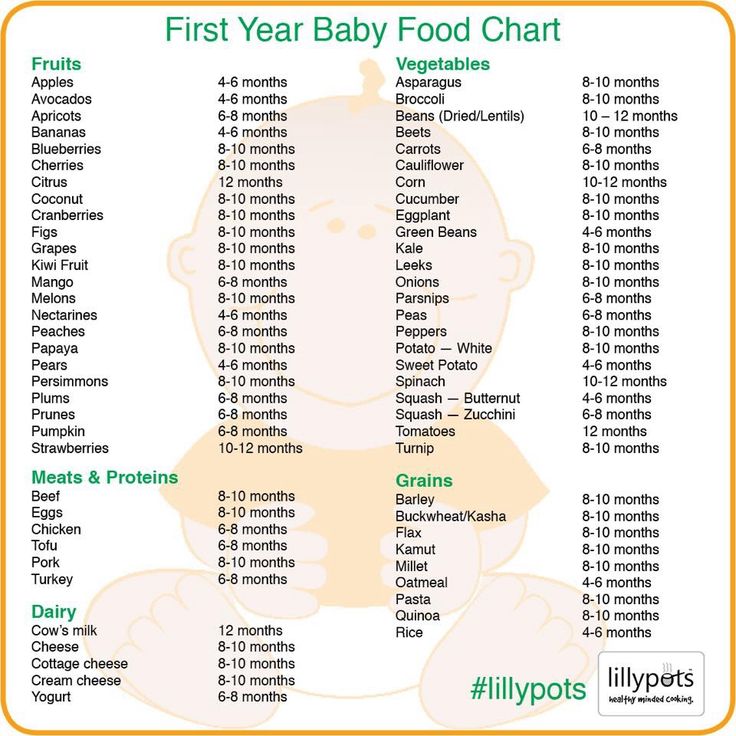 All respondents agreed that the topic is really important, as it determines the future of the state.
All respondents agreed that the topic is really important, as it determines the future of the state.
The public believes that…
As the analysis of the collected information has shown, many ordinary people are firmly convinced that the full development of the child occurs when specialized products are included in the menu. It is necessary to add to the diet components enriched with minerals and vitamins, microscopic vital elements, which are insufficiently concentrated with mother's breast milk even at the most tender age. If a few decades ago this topic was of concern only to specialists, nutritionists, now the general public is concerned about it.
Special nutrition helps to make up for the lack of essential substances. Gradually, a wider variety of dishes are included in the diet, the possibilities of products are expanded, and the menu is supplemented with juices. This makes it easier for the baby to transition from mother's milk to more commonly available food.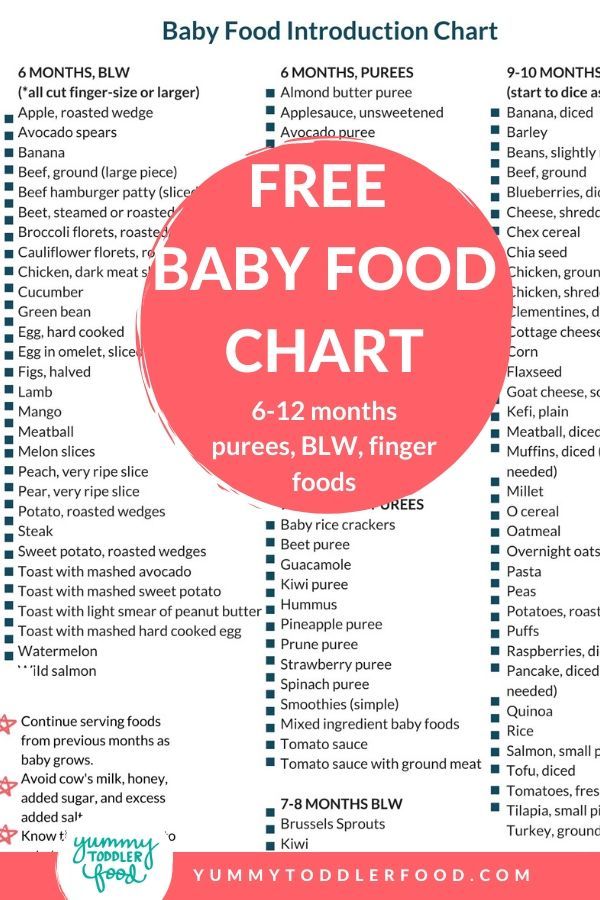
What to look for
According to public polls, almost 40% of all citizens, when choosing baby food, study the composition for enrichment with useful substances. About a quarter of all those who wished to share their opinion noted that for them the main reason for choosing was the absence of harmful compounds and preservative components. A few percent more inhabitants prefer to buy only products of responsible production, and pay special attention to the cost. Only one tenth of our fellow citizens is ready to purchase foreign food, arguing their position with the increased quality requirements practiced in other powers.
The current legislation of our state establishes general requirements for the quality, specifics of the production of baby food, so you should not so recklessly assure yourself that only imported goods can be worthy in terms of their level. The legal documents that are currently in force regulate: all baby food must satisfy the peculiarities of the digestive system at a particular age. Only then will the babies grow and develop normally. It is difficult to overestimate the importance of such normative acts - they legislate the conditions for the future of the state.
Only then will the babies grow and develop normally. It is difficult to overestimate the importance of such normative acts - they legislate the conditions for the future of the state.
Everything is justified
In order for food products to meet the needs of the child's body, they must contain a number of specialized components aimed at activating metabolic processes, stimulating immunity and growth, development of tissues and organs. Additionally, they include substances that help the baby's underdeveloped immune system to resist infectious agents, inflammatory processes.
In order for baby food to be of really high quality and effective, it must contain iodine and selenium. Be sure to include vital minerals: manganese and zinc. Significant for children is copper, which enters through the digestive system in adequate quantities. The specific concentrations of these substances needed by the baby are determined by age and individual characteristics. It is for this reason that on sale you can see special positions for one-year-old babies, while others are intended for three-year-olds and older.